
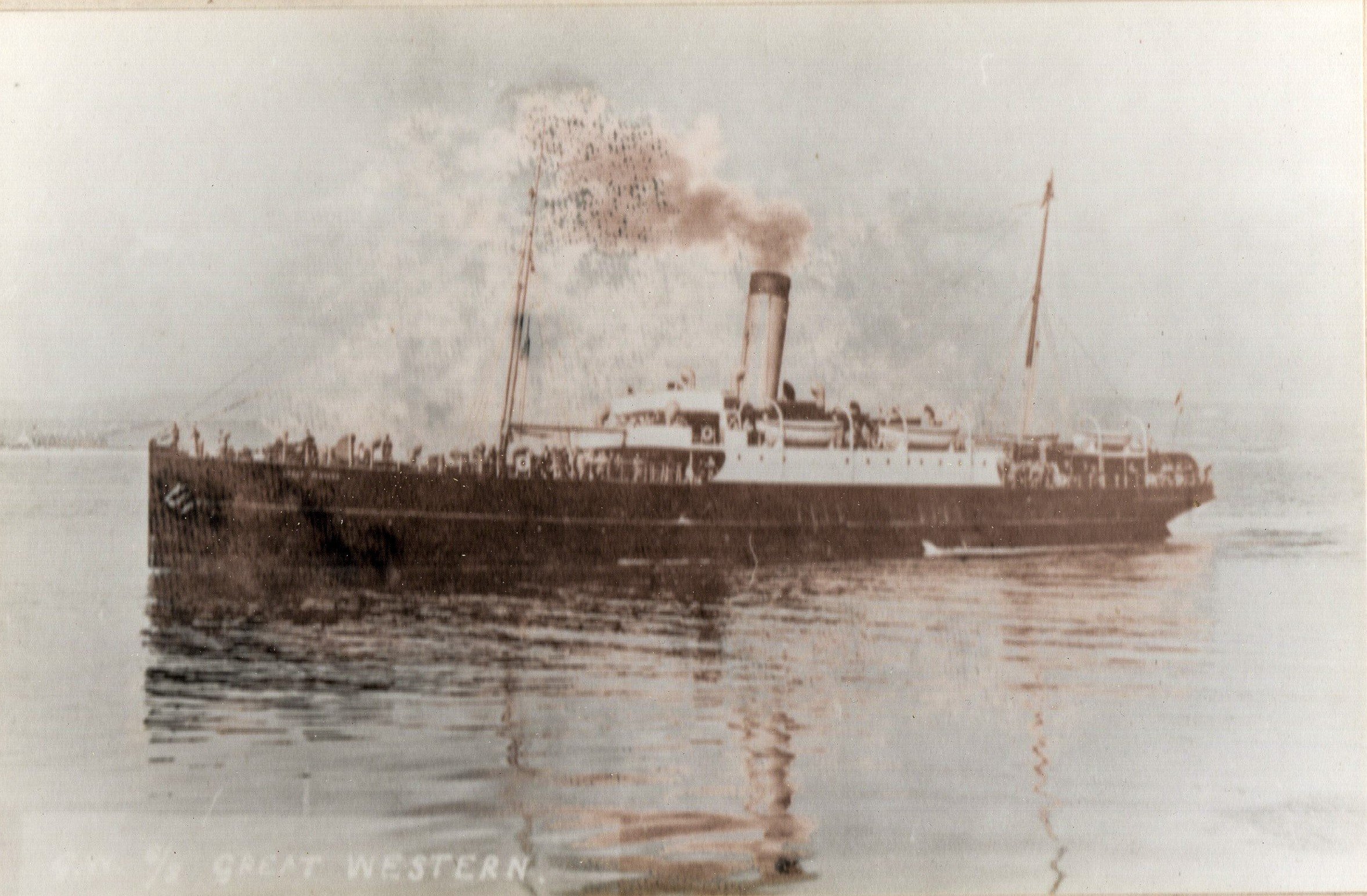
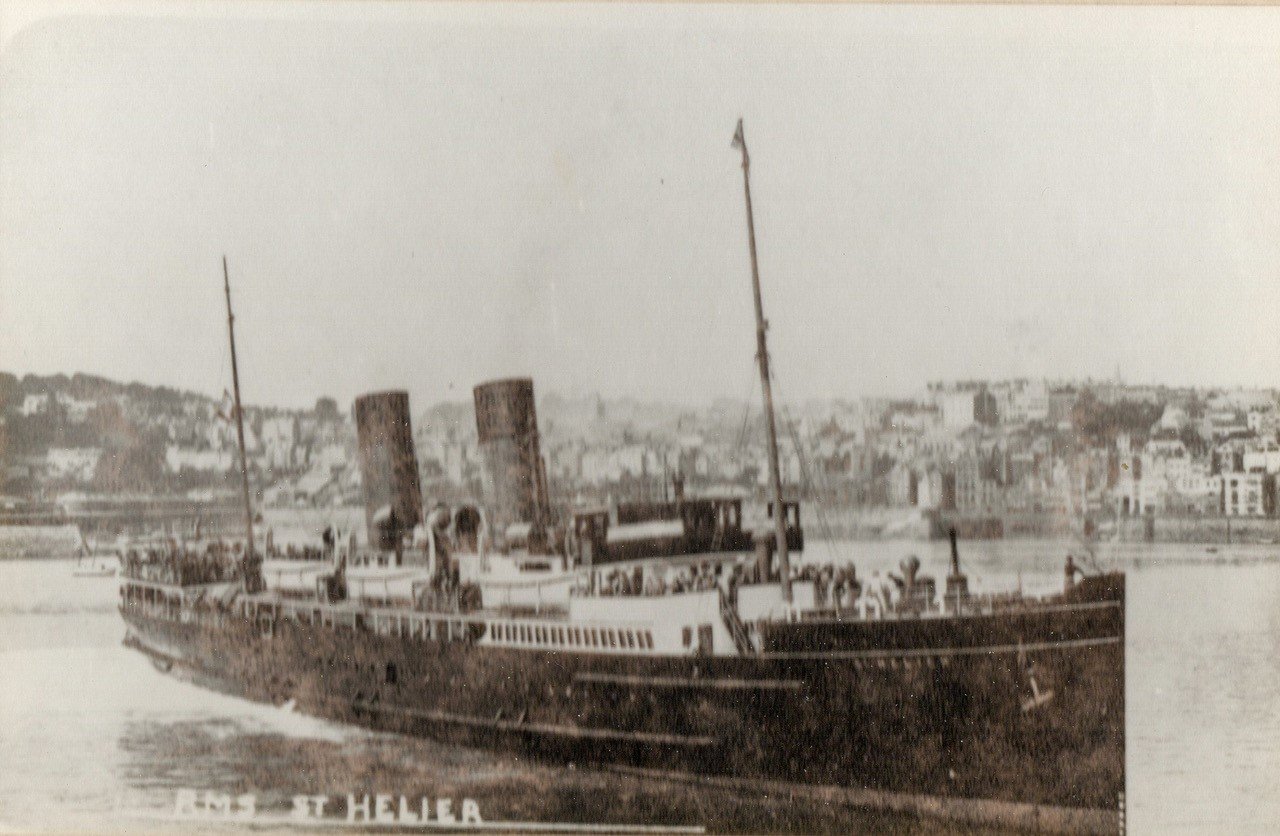
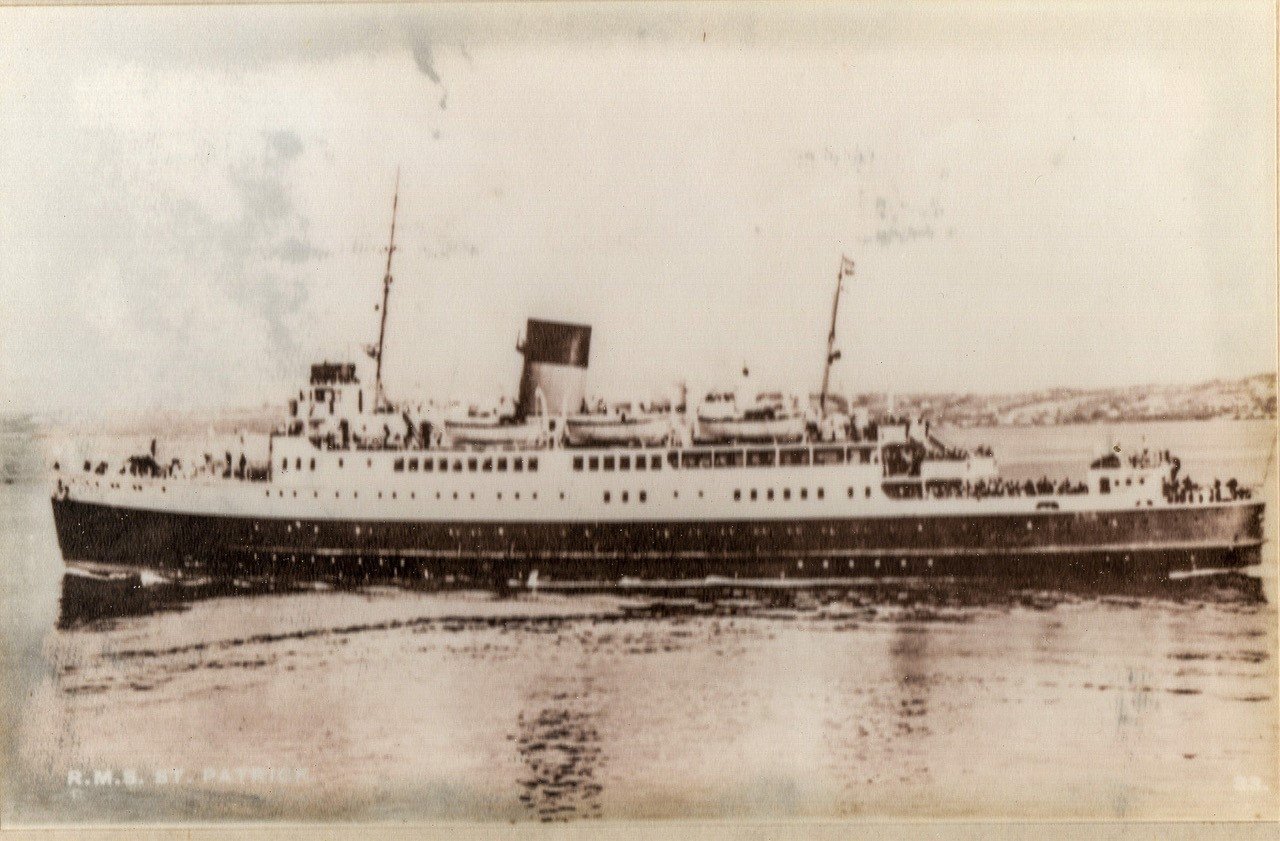
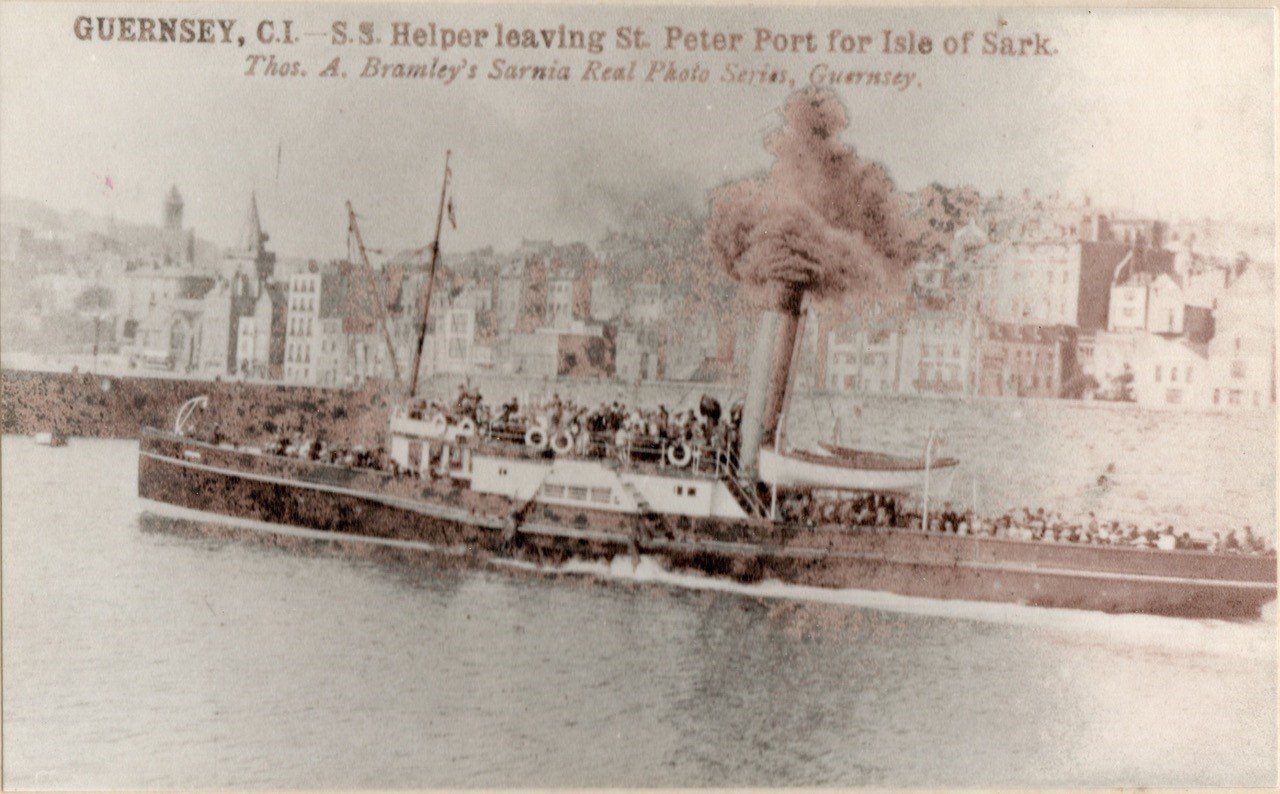
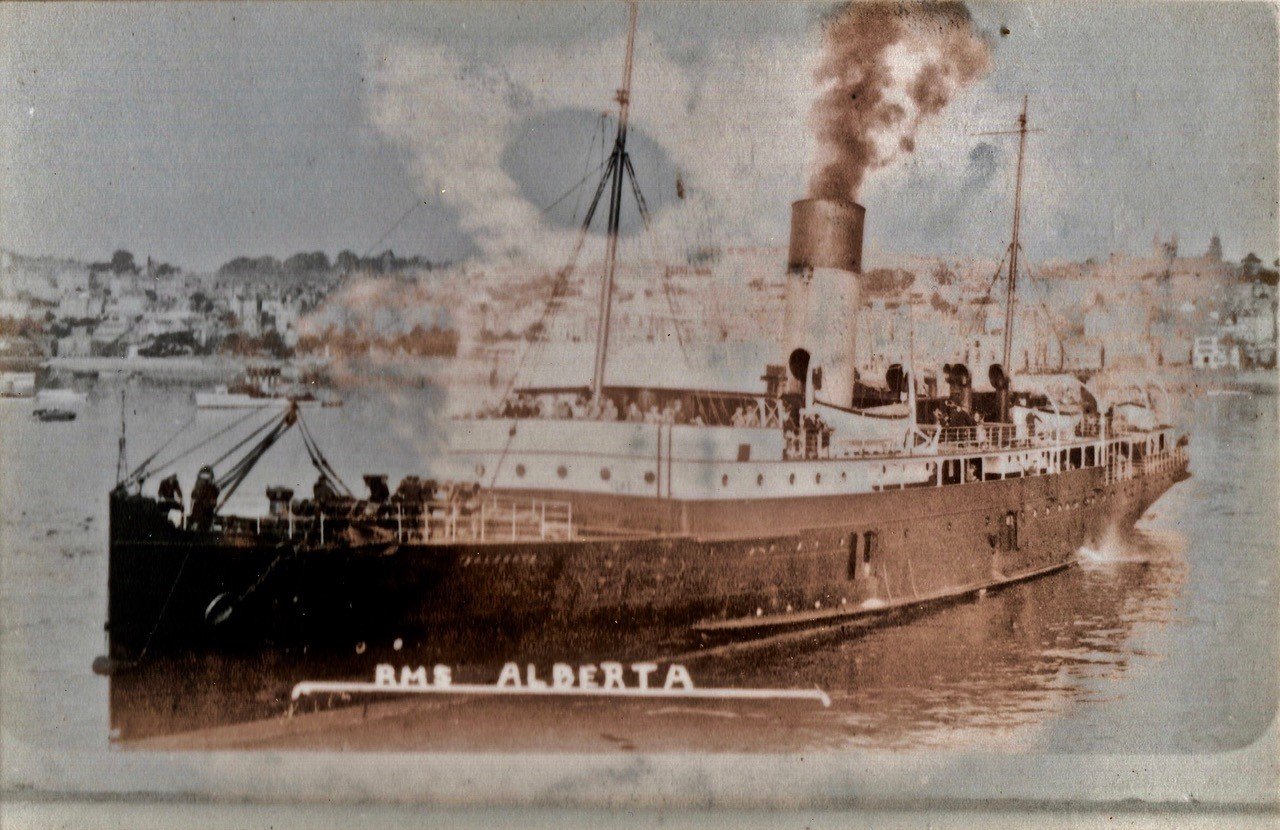
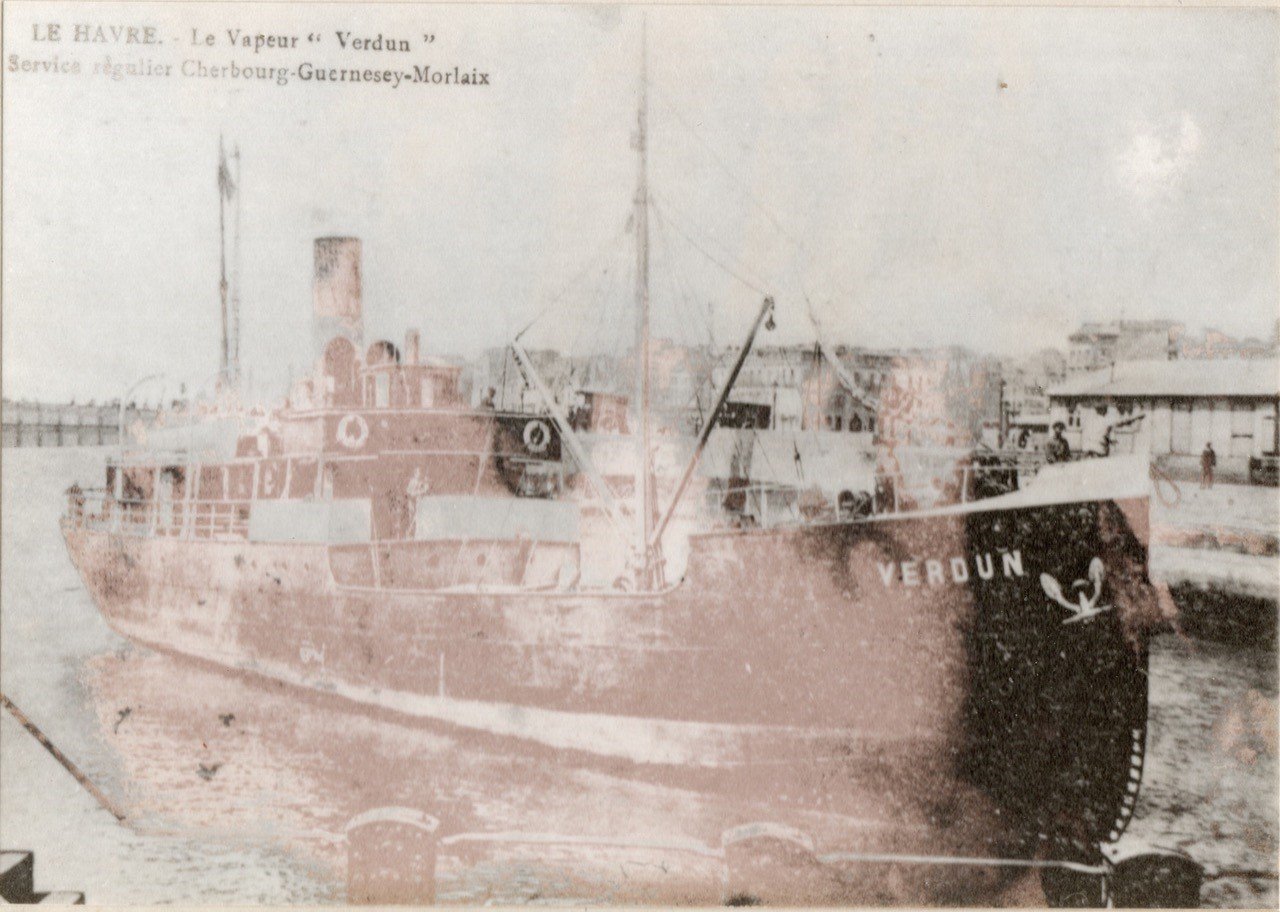
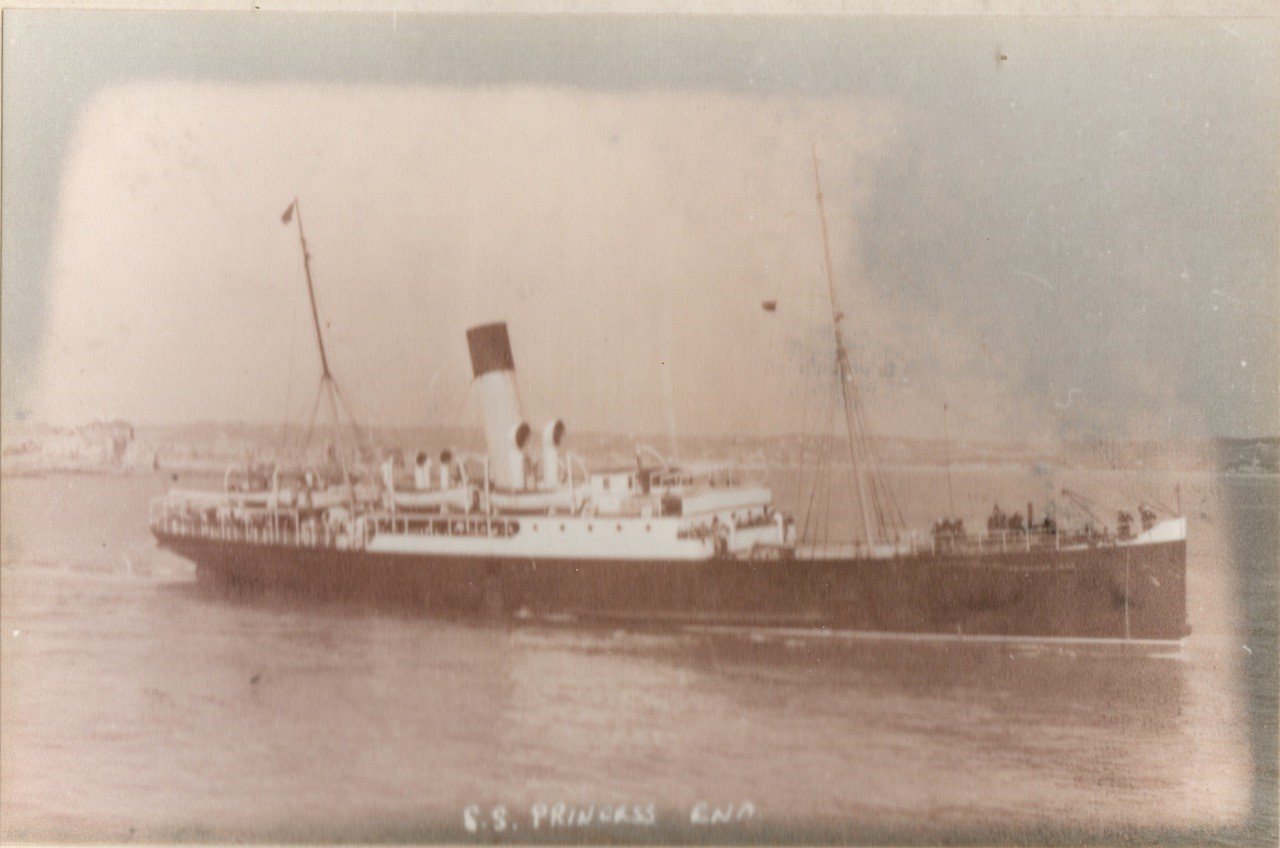
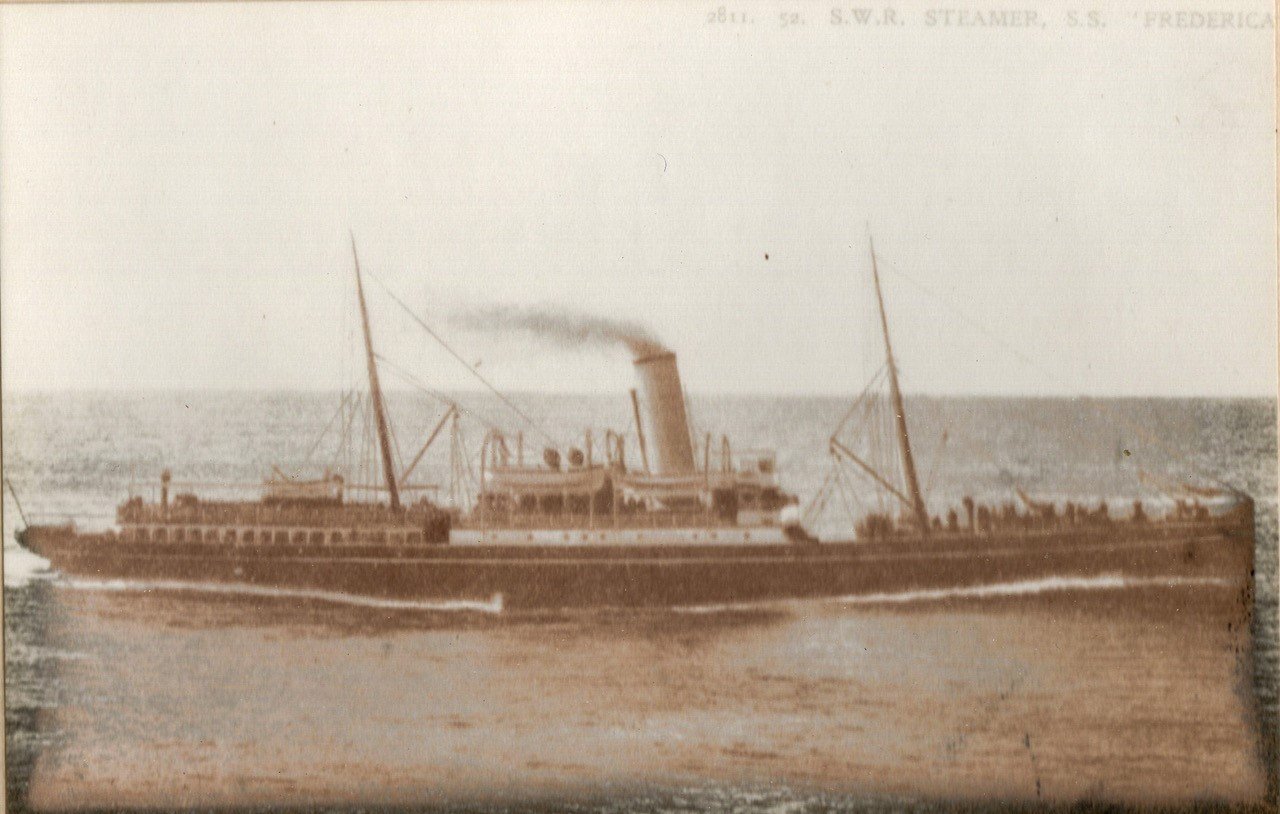
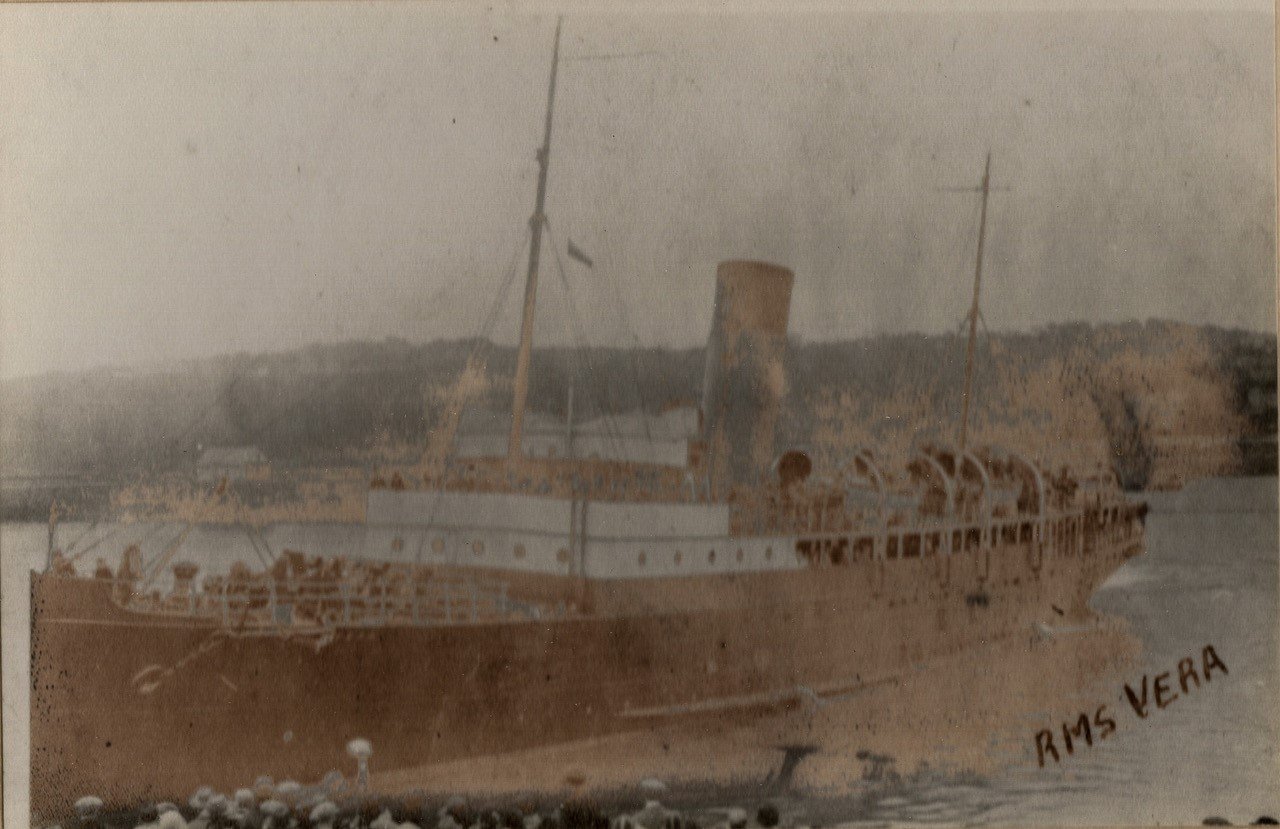
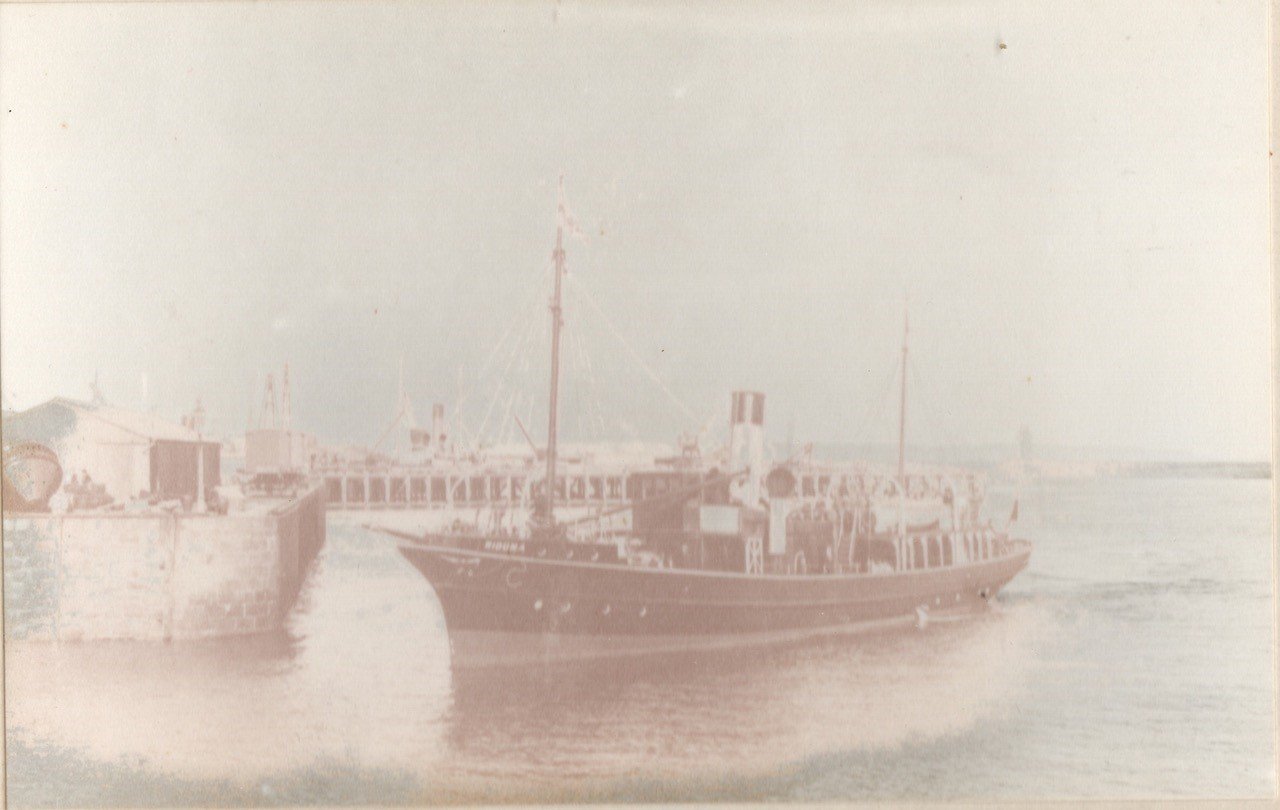
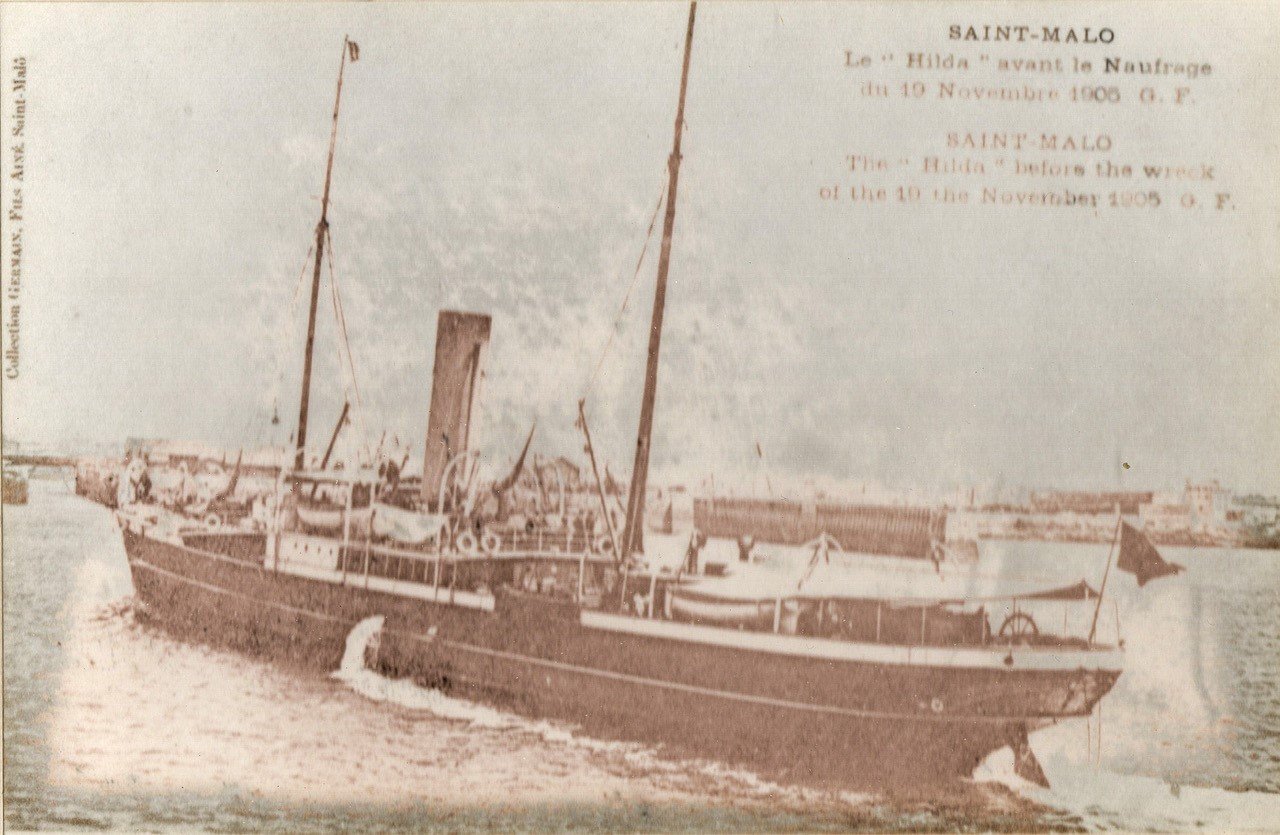
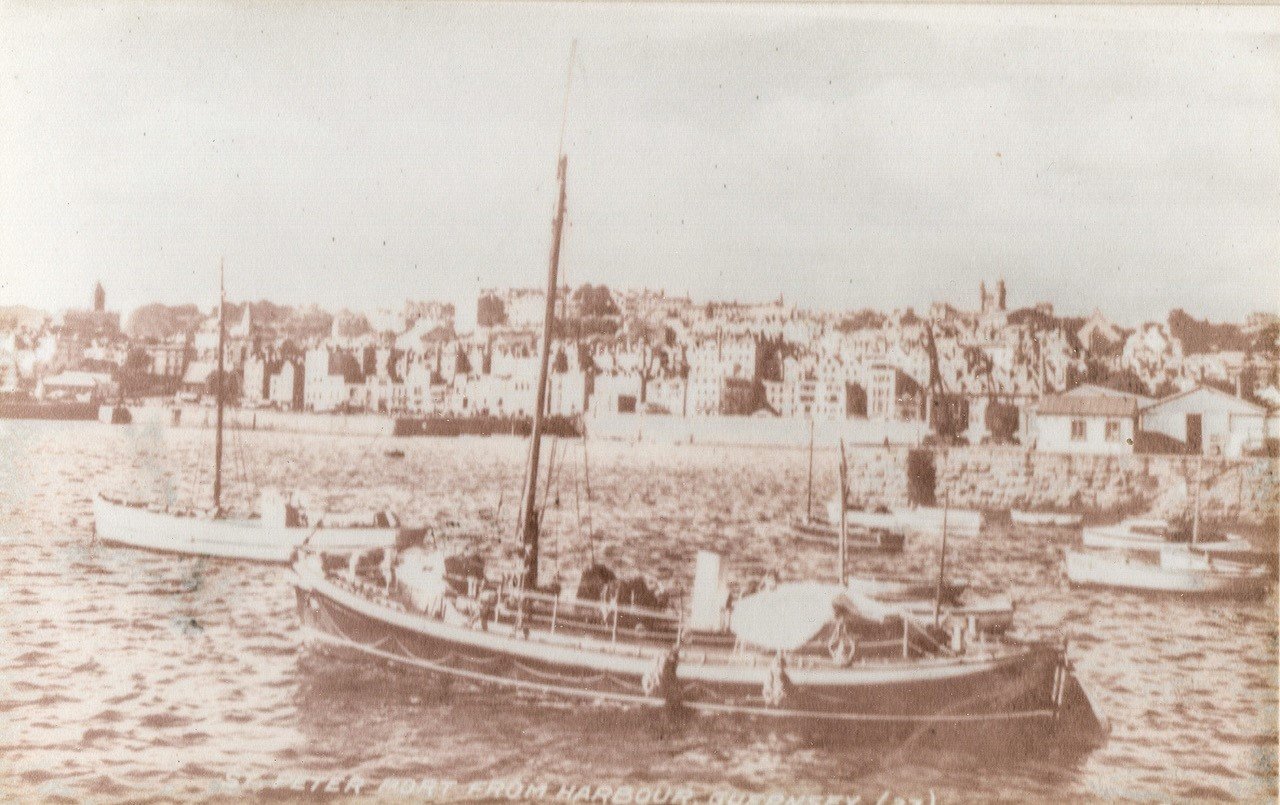

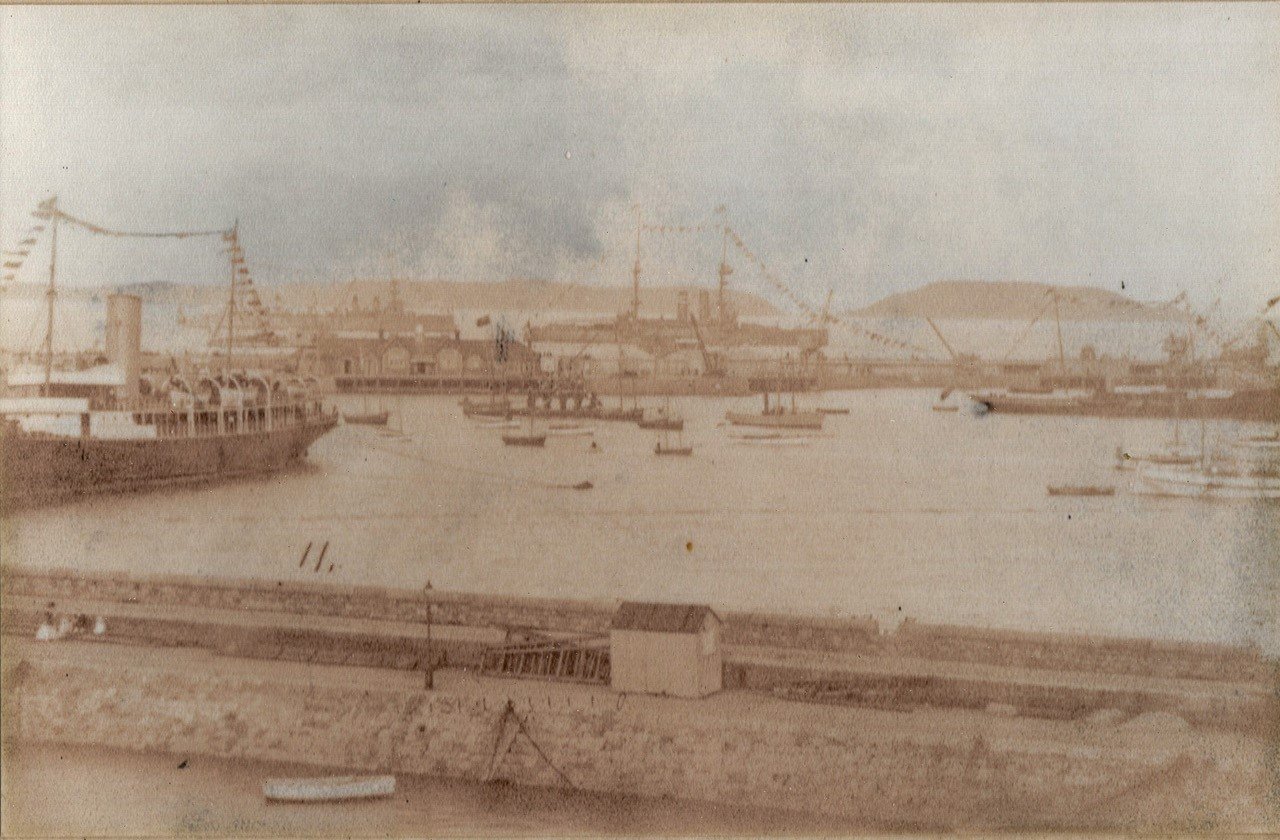


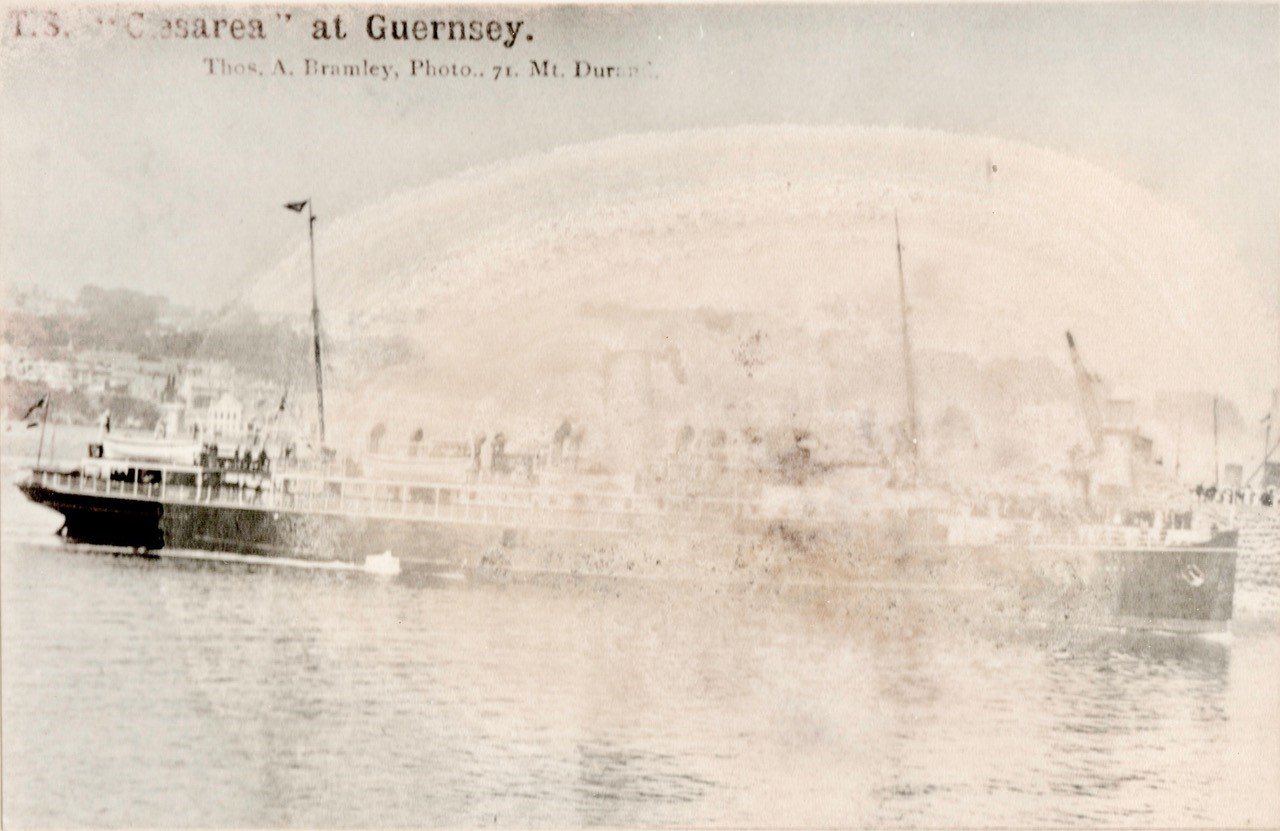













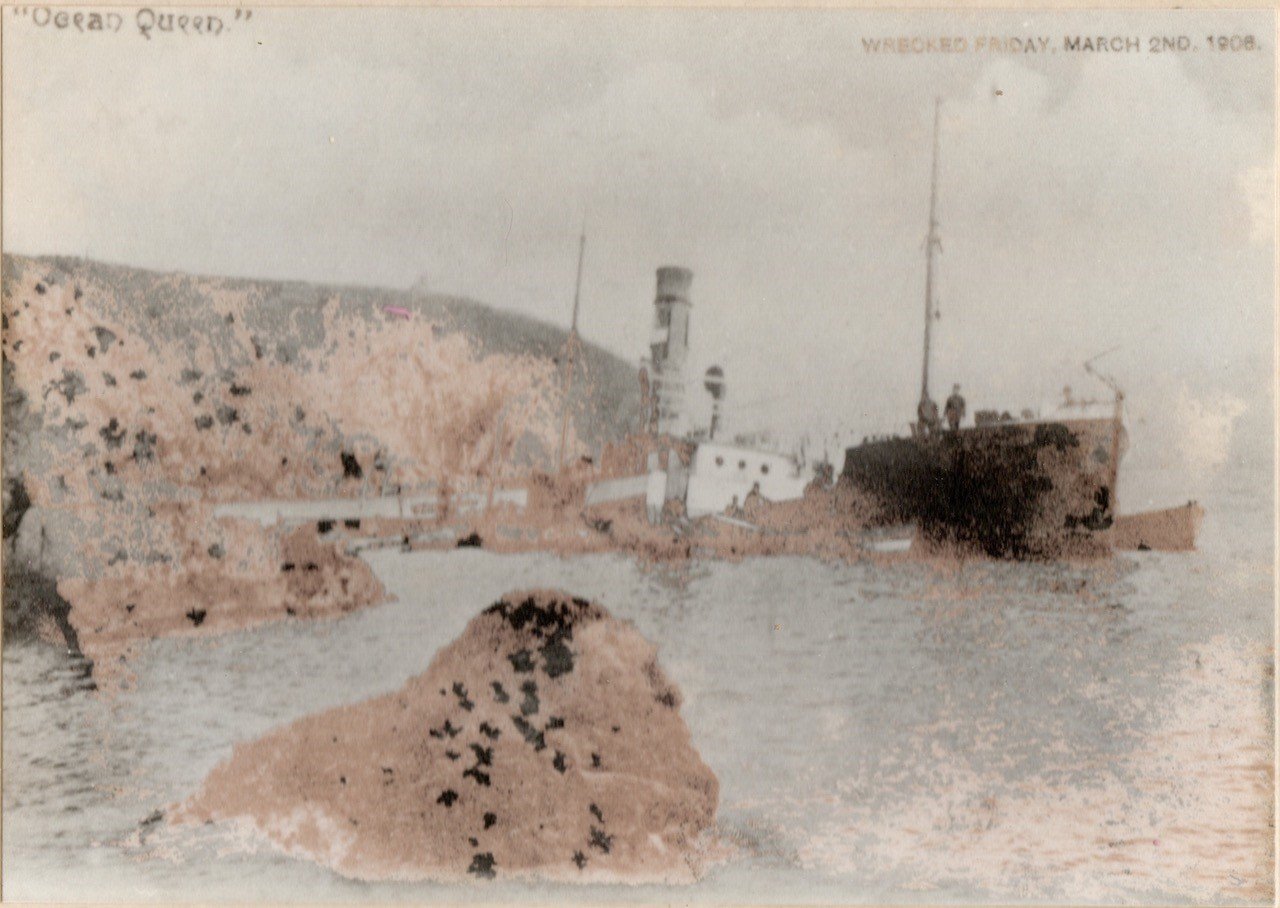

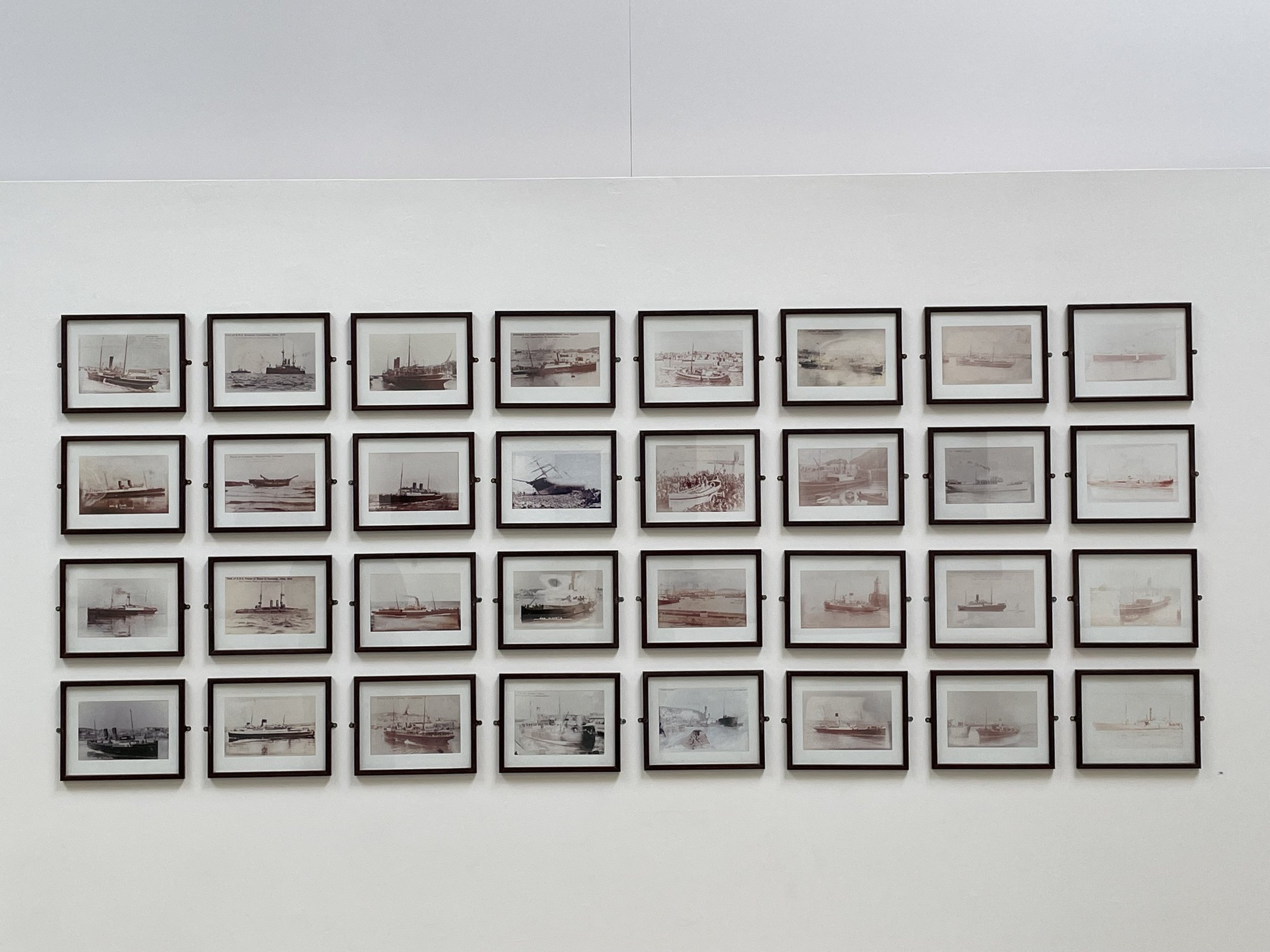
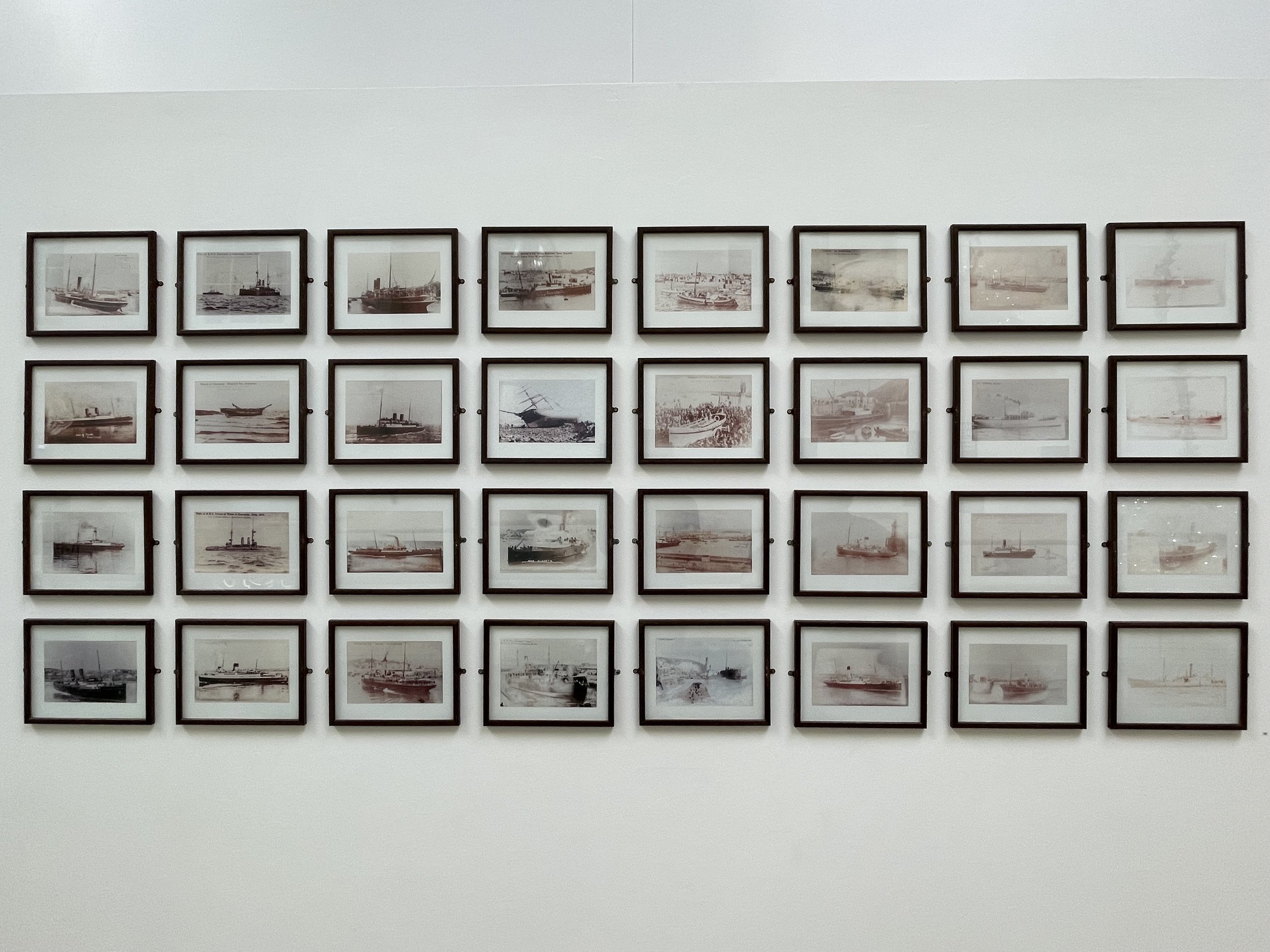

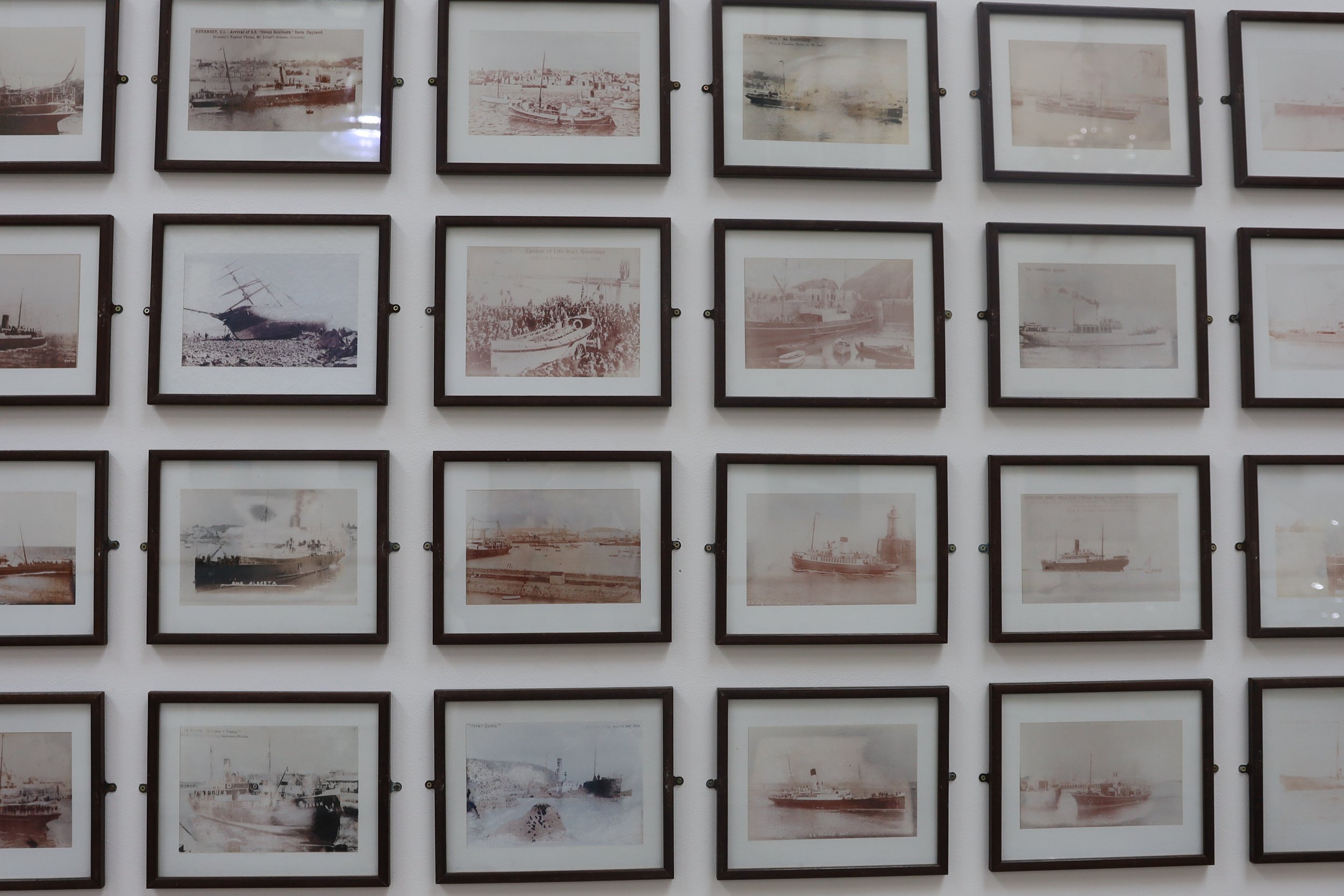
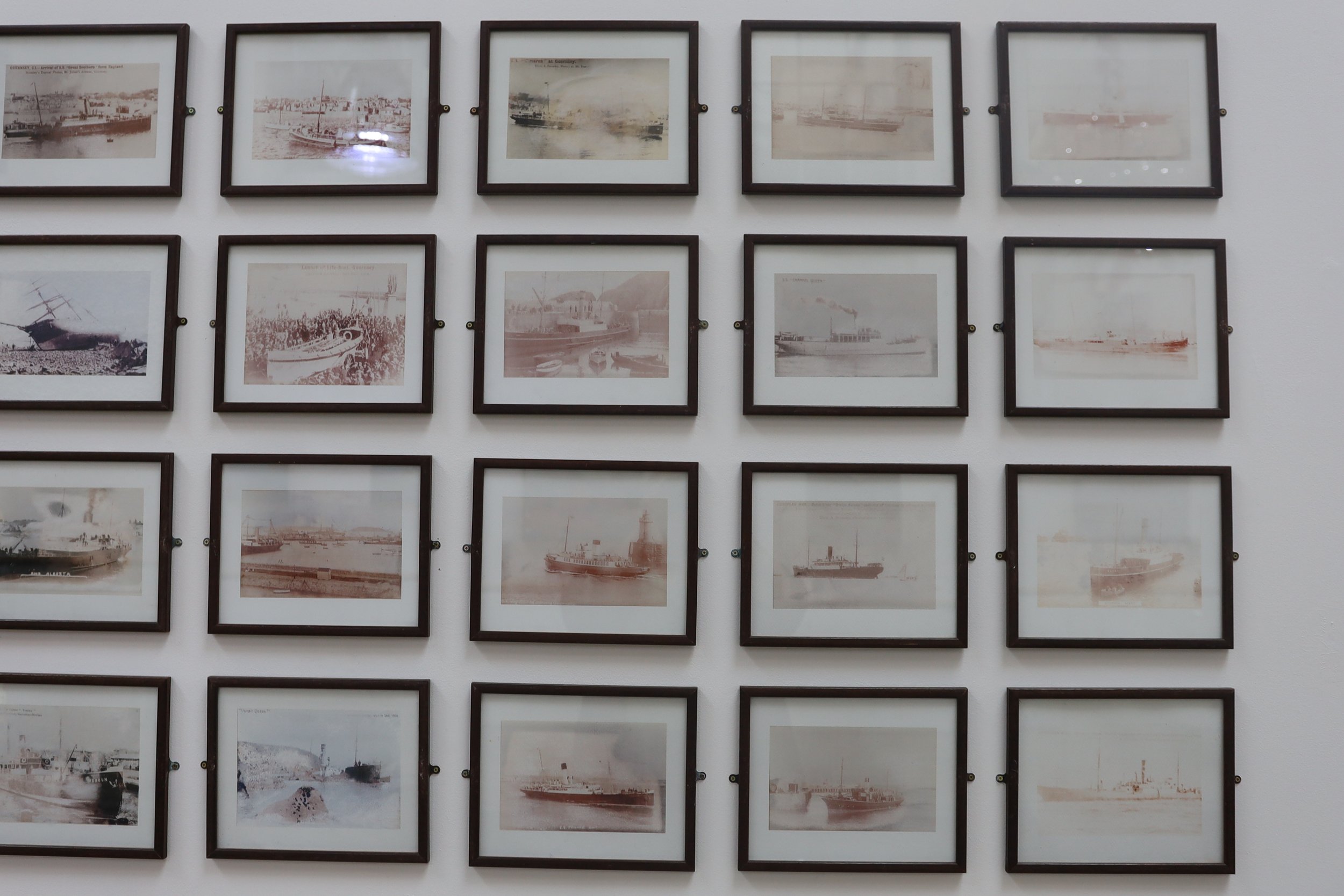
This work stemmed from a day when my sister in law was clearing her father’s house a few months after his death. Peter had managed various local hotels during his long working life and the walls of his home office were covered by a set of pub images of old ships that had resided in many local hostelries, including Wyndham’s Hotel and the Yacht Pub.
Although badly damp-stained and faded, I was completely drawn to them. They felt like signifiers of change and loss, but also of lives lived and hope.
As Carlee and her sister had no space for them, I boxed them up and thought more about why they resonated with me so strongly.
I removed from their 70’s frames, scanned and copied them onto drawing paper. Many were badly water stained, foxed or faded which seemed to give them a sense of holding on to time - years of history being fleetingly observed whilst people socialised and time moved on.
Those that retained only a trace of the photographic print were made more ghostly through the use of chalk while stronger images were heightened with compressed graphite. The dusty, pub-yellowed glass was washed, frames polished and the new images inserted.
The photos, in their own right, are an interesting historical record of 20th century travel and ships long decommissioned. While working on them, I was conscious of how different journeys made on these solid craft 50 or 100 years ago must have been, compared to the precarious daily passage of asylum seekers attempting to cross the English Channel to reach the UK on flimsy inflatables.
Negative political discourse relating to refugees has infiltrated public attitudes in recent years in the Channel Islands as well as in Britain.
As well as wanting people to appreciate the old boats and images of local history, I wanted the installation, which was part of my first solo show for over 25 years, to ask viewers to consider what it feels like to arrive in a new country. How long might it take to feel like you belong? Are all new citizens equally welcome?
Guernsey is a welcoming place. Islanders are mostly kind, interested and helpful to those newly arrived. But like most places, it’s not immune to Daily Mail rhetoric and casual xenophobia. The irony is that even if many of us have three or more generations of local connections, at some point our family ancestors were immigrants, making that familiar sea crossing to start a new phase of life.
In the past, the Island has been a sanctuary to those seeking refuge from persecution and adversity, regardless of their political allegiance. French Huguenots - Protestant refugees, found sanctuary here in the 16th and 17th centuries, fleeing religious persecution. Their arrival enriched Guernsey's cultural and economic development.
During the English Civil War in the 17th century, Royalists sought refuge in Guernsey, escaping political turmoil and persecution on the mainland. The island provided a safe haven for those loyal to the monarchy, demonstrating its commitment to sheltering those in need regardless of political allegiance.
In the 18th century, persecuted Jews from across Europe were welcomed and allowed to practice their religion freely. This period saw the establishment of a vibrant Jewish .community.
The work is a call to value the contribution, insight and diversity that new citizens bring to our community. It is also one small protest among many about UK Conservative Government’s Immigration Policy.
September 2022